The Bone Church is a must-see tourist attraction near Prague in the Czech Republic. More correctly known as The Sedlec Ossuary, the Bone Church is located on the outskirts of the town of Kutná Hora (Central Bohemian Region of the Czech Republic), at All Saints Chapel. The Bone Church features unique and artistic formations made from over 40,000 human bones. The artistic use of the bones keeps The Ossuary from feeling too creepy and this destination is great for adults, families and kids, so long as your little ones aren’t too sensitive to such things. Prague is undoubtedly one of the best destinations in Europe for lovers of history, art, and beautiful architecture and this day trip from Prague is a must.
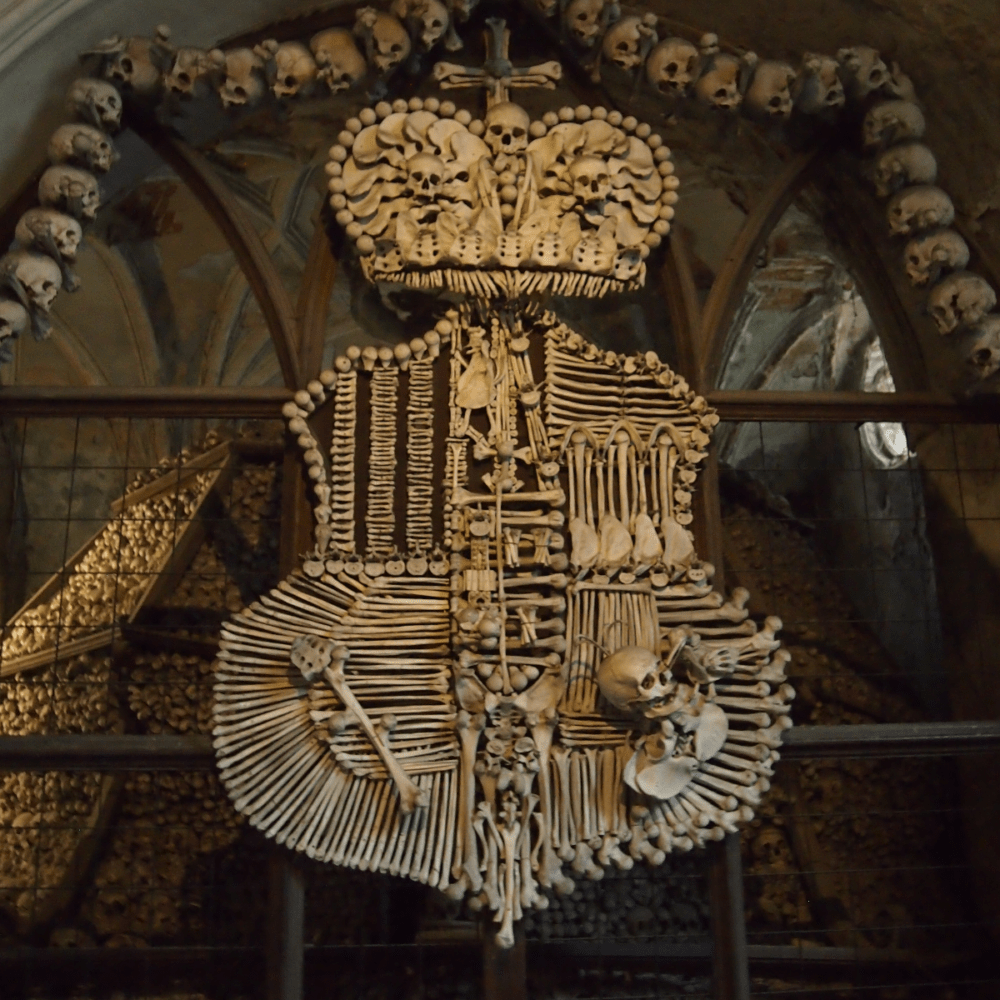
The Bone Church, Prague
There are multiple bone churches in the Czech Republic, in Europe and the world, this post is about the bone church near Prague, at Kutna Hora. To visit this bone church from Prague you need to book this tour.
The Bone Church History
The first use of the land now occupied by the bone church was the building of the first Cistercian monastery in Bohemia, Sedlec monastery, in the 12th century.
The Bohemian King, during the late 13th century, Přemysl Otakar II, sent the Abbot of Sedlec, Henry, to the Holy Land, from where he retrieved soil from the Golgotha area of Jerusalem. This soil was scattered about the cemetery at the monastery and caused a large increase in the popularity of the burial grounds.
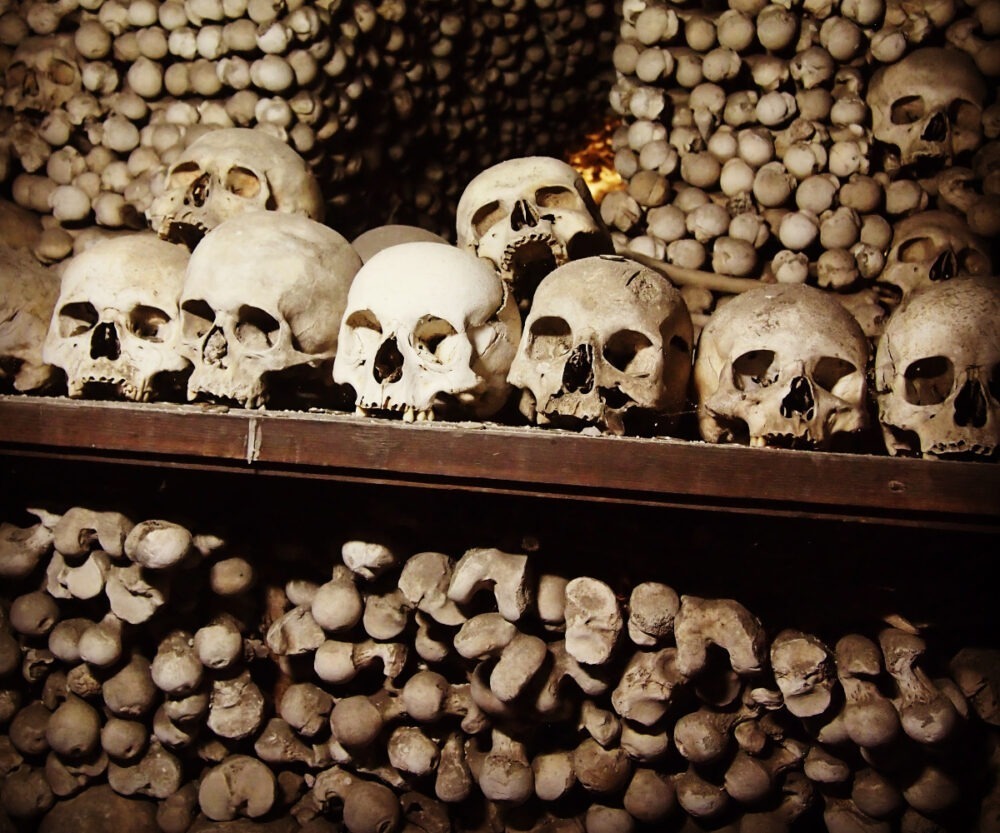
People from across Europe wished to be buried there. The monastery cemetery became a mass grave to tens of thousands of soldiers and plague victims buried there in the mid 14th century and the All Saints Chapel itself dates from the 14th century.
The Chapel stands above ground, and abandoned or misplaced bones were gathered in the ossuary below.
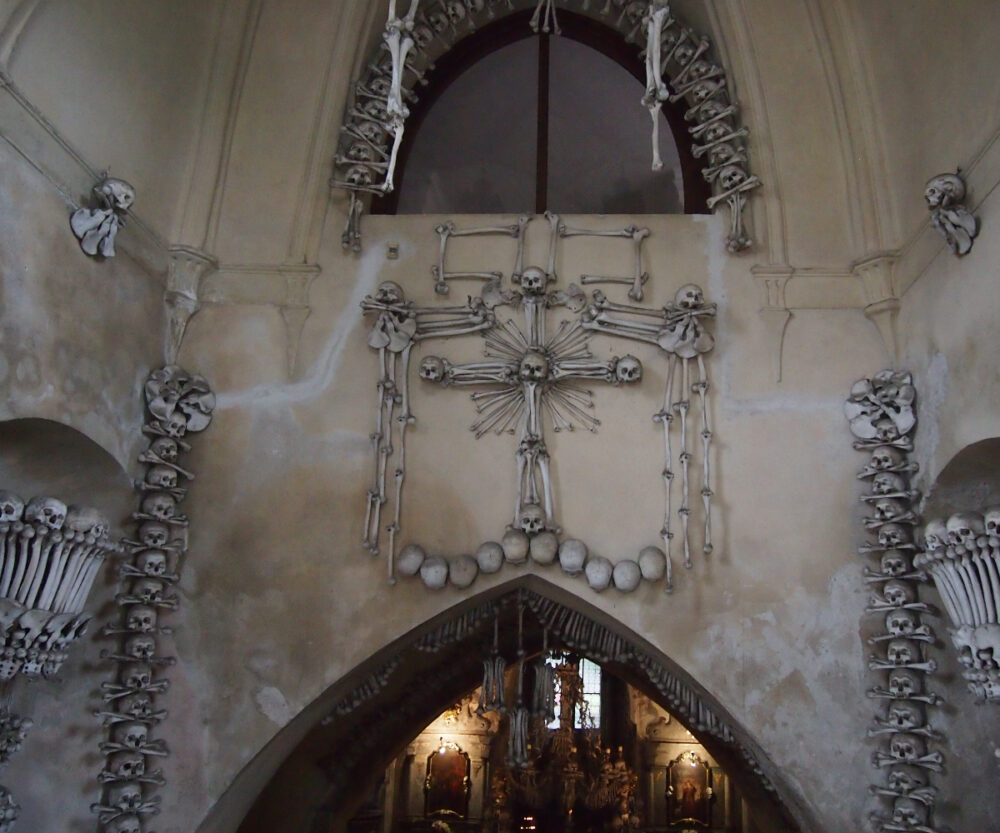
Around the 15th century, a gothic church was built upon the cemetery called the All Saints Chapel, which featured a typical chapel above the ossuary which was constructed upon the discovery of the mass graves found and unearthed during construction.
An ossuary is the final resting place for human skeletal remains, and ossuaries are usually constructed when there are space constraints that need to be worked around. Ossuaries can be boxes or buildings and are needed when there are just too many bones in the ground or when building work unearths graves.
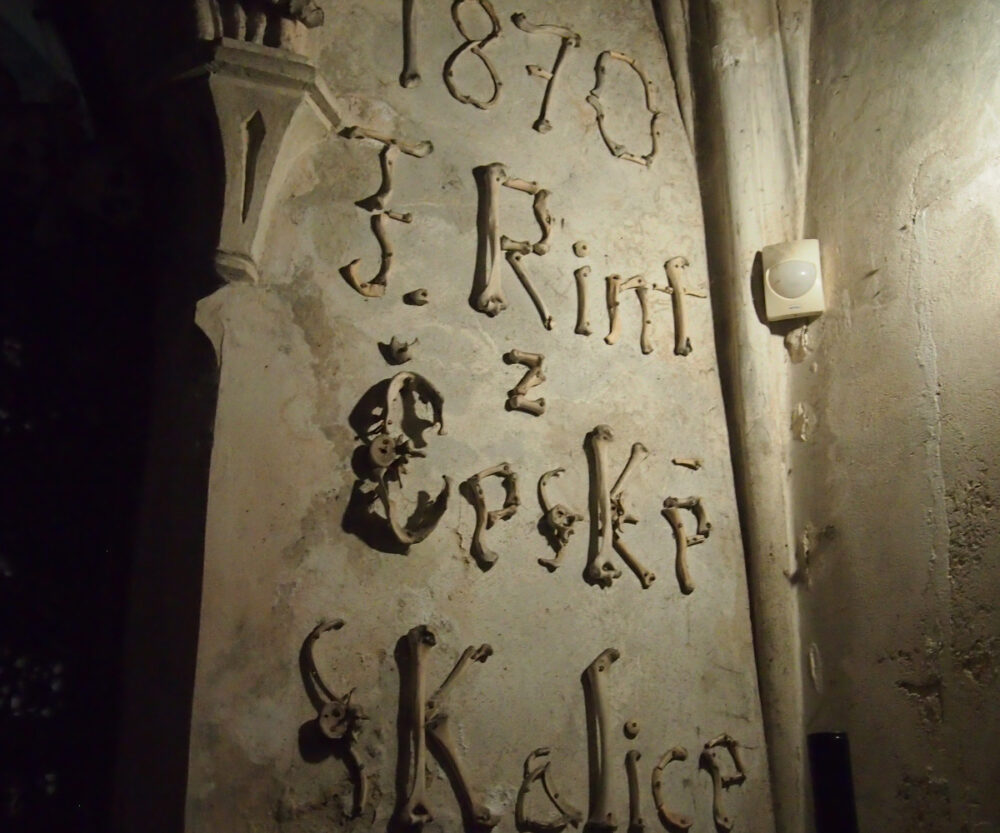
During the Hussite Wars the churchyard took on many more fallen soldiers and civilians. The church itself even took on damage during the Battle of Kutna Hora.
Eventually, during the early 16th century, a half-blind monk moved the misplaced bones from the graves that had been dug up during construction into piles. (source)
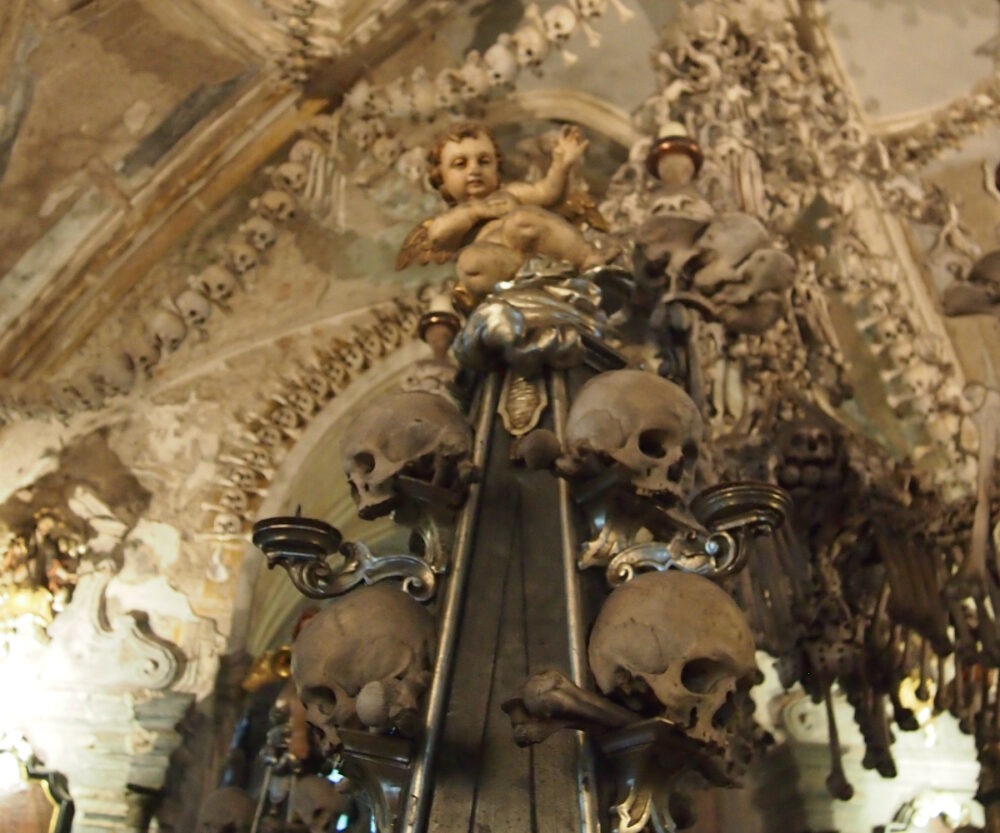
The church was renovated again between 1703 and 1710 by Jan Antonín Blažej Santini-Aichel, who used a gorgeous Baroque-Gothic style. This style featured heavy geometric touches and hidden symbols. He created crowns and candelabras from the bones. he also designed or redesigned several other buildings such as the nearby Monastery Church of the Assumption of the Virgin Mary and Saint John the Baptist, the Church of Saint John of Nepomuk, The Kladruby and Plasy monasteries and several others.
The monastery was abolished by the Holy Roman Emperor Josef II in 1783, and bought by the Schwarzenberg family, who bought both the ossuary and the land around it. In 1870 the family hired Frantisek Rint, a woodcarver, to reorganise the bones into the structures still seen today.
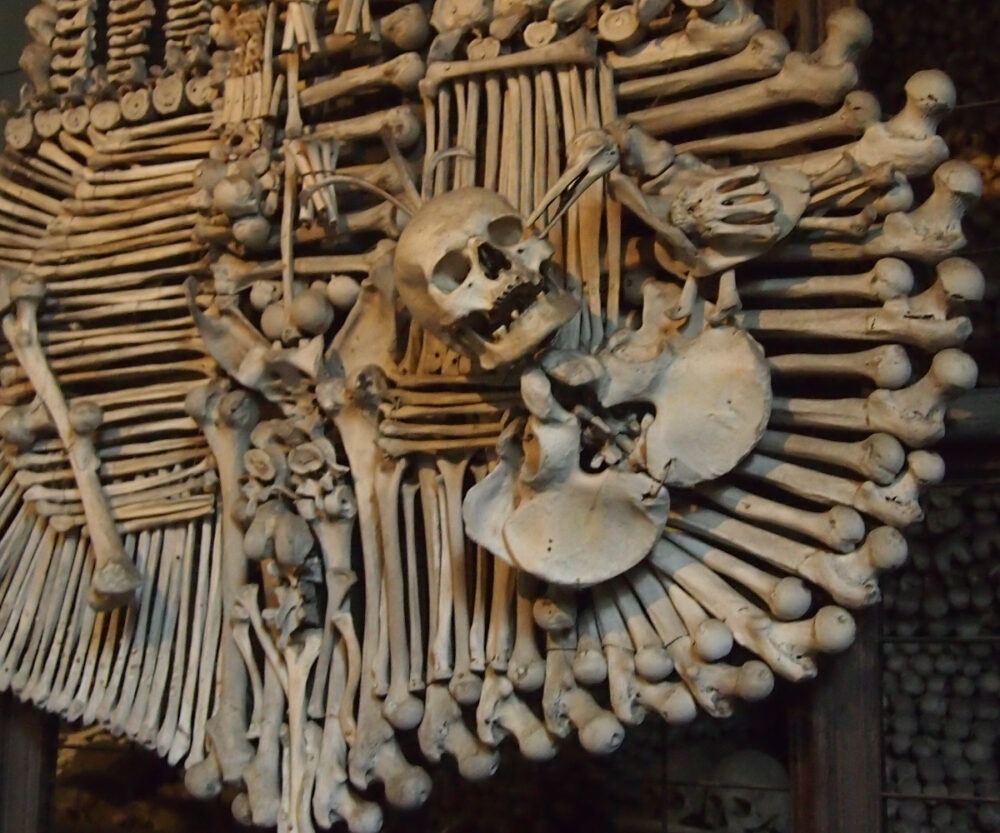
You can see his work in the enormous chandelier of bones and in the bone depiction of the Schwarzenberg coat of arms. In the lower right corner, the coat of arms features a bird pecking at the decapitated head of a Turk.
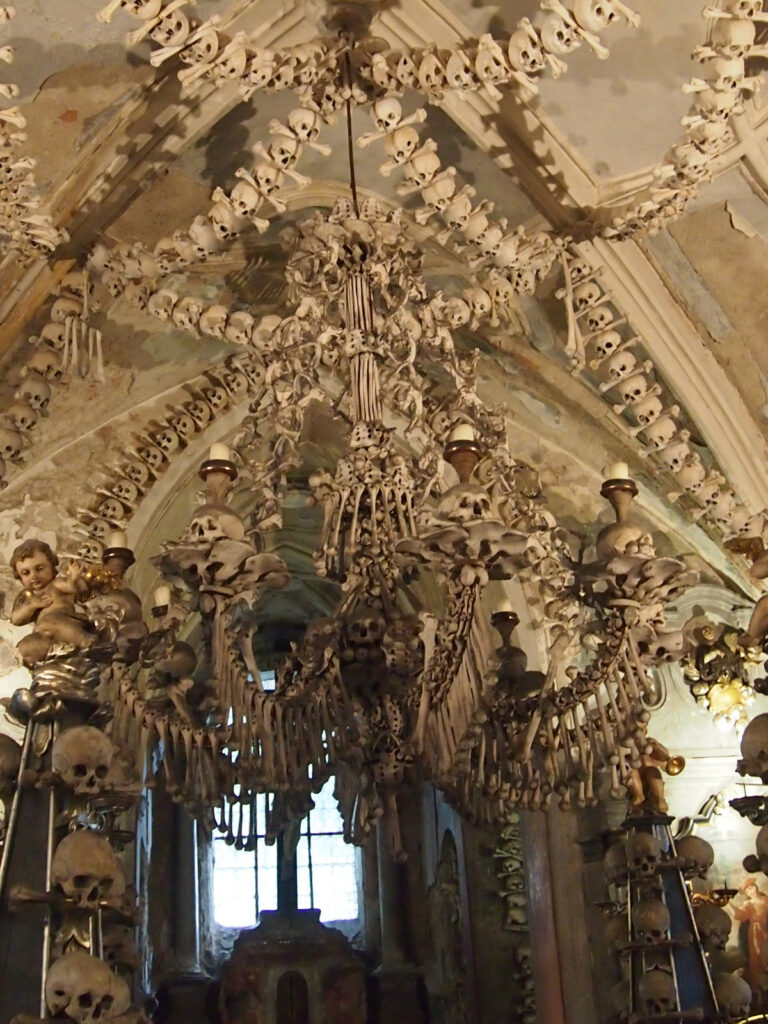
The Church of Bones has an eery beauty in its structures in the ossuary. There are large constructions like the coat of arms or the chandelier, and also less imposing structures such as skull chalices and pyramids, or the arching roof that has bones decorating it.
Read more about Kutna Hora and its significance on the UNESCO website. We did a lot of research, I hope we got all those facts right, there are multiple links to sources for you to double check.
Other Bone Churches in the World
There are several other bone churches in Europe, including the recently opened Brno Ossuary also in the Czech Republic, found in the capital of Moravia. This ossuary is located under Saint James Church. It’s an ossuary with the bones of 50,000 people, making it the second-largest ossuary in the world.
The biggest ossuary in the world is The Paris Catacombs. That’s a must-visit on a trip to Paris. Read where to stay in Paris here.
Other ossuaries in Europe:
Ossuaries outside Europe
The Convento de San Francisco Ossuary In Lima, Peru is thought to hold the bones of 70,000 people. Ossuaries are also to be found at the tragic Killing Fields in Cambodia.
Visiting The Bone Church Near Prague
We loved visiting the Bone Church with two small boys, they thought it was great and they learned a little history. One of them learned (worldschooling) a lot more today researching this post! We visited as part of a trans-Europe road trip, we self-drove to Kutna Hora from our hotel in Prague (actually a good family-friendly hostel, this one). If you don’t have a car we’d recommend you book a day trip to Kutna Hora from Prague, one like this. We mention Prague, Kutna Hora, and Cesky Krumlov elsewhere in our Europe travel blog section. The ossuary at Brno wasn’t open when we stayed in this Czech city, but as it’s the second largest in the world, it must surely be worth a look! Find out what to pack in our travel essentials post and book your cheapest flight to Prague using Skyscanner.
If you'd like to hire a car during your stay, use this car rental comparison tool to find the best deal!
We also suggest you take a look at this company to get a quote for all kinds of the more tricky adventure or extended travel insurance.
Try Stayz / VRBO for an alternative way to find rentals on homes/apartments/condos in any country!
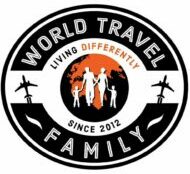
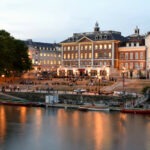

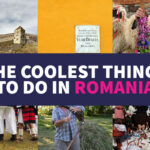


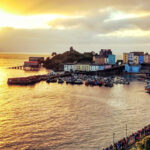


So funny – we were there today! And in Cesky Krumlov when you updated that post! If you’re just going to see the Ossuary, it’s an easy train ride from Prague main station. Not allowed to take photos anymore though…
Oh really! That’s a shame. Are they trying to sell photography permits? Lucky we went when we did.